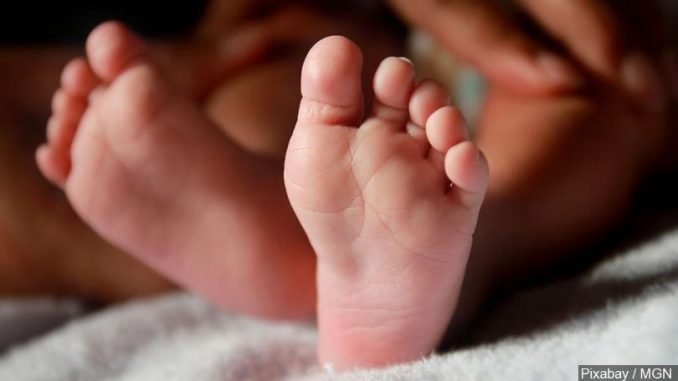
The world’s first ever baby with DNA from three biological parents has been born.
In April the world welcomed the first baby to be born using a technique that combines the genes of three parents

BYPASS THE CENSORS
Sign up to get unfiltered news delivered straight to your inbox.
You can unsubscribe any time. By subscribing you agree to our Terms of Use
Latest Video
The New Scientist revealed the birth of five month old Abrahim Hassan to Jordanian parents Ibtisam Shaban and Mahmoud Hassan, but his DNA also includes some from a donor.
The baby was born from an embryo in Mexico, where there are no rules on using the three-person IVF technique called pronuclear transfer.
Exclusive: World’s first baby born with new “3 parent” technique https://t.co/qvfnzUHozLpic.twitter.com/fUMnW9qDYs
— New Scientist (@newscientist) September 27, 2016
The Mail Online reports:
The controversial technique has only been legally approved in the UK.
However, the first baby was engineered by a US medical team who treated Shaban and her husband Mahmoud Hassan in Mexico, where there are no laws to block the procedure.
And embryologists believe this birth should fast-forward progress around the world, offering hope to millions who face the prospect of delivering terminally ill children.
‘This is a milestone technique,’ Dr John Zhang, who led the medical team from New York City’s New Hope Fertility Center, told Daily Mail Online.
‘It proves for the first time that genetic information from three people can avoid disease,’ he said.
‘We now know reconstitution of human eggs can produce a healthy baby.
‘No other technique has been established.’
Dr Zhang is not naming the baby or the parents.
However, he revealed some details about the family’s devastating journey to reach this world-first.
The parents have already lost two children to the same condition – Leigh’s syndrome – their first at the age of six; their second at eight months.
Leigh’s syndrome is a severe neurological disorder which attacks the nervous system.
It gradually inhibits a child’s mental and physical abilities from the moment they are born.
Sufferers typically die by the age of three due to lung failure.
Tests revealed that, in this case, the boy’s mother carries genes for the disease in her mitochondria.
Mothers pass down a melting pot of DNA. The majority is ‘nuclear DNA’ passed down in each cell’s nucleus.
But 37 maternal genes are passed to the child in each cell’s mitochondria – the cell’s ‘battery’. Father’s never (or at least barely ever) pass down mitochondria.
Mitochondria carry just 37 genes. In this case, one in four of the mother’s mitochondria have the mutation that causes Leigh’s syndrome.
Devastated by the loss of their two children, the couple flew to America to meet with Dr Zhang at New Hope, a facility which focuses on training in new innovations.
With strict regulations in the United States, the team went to Mexico.
The boy was born through a technique called spindle nuclear transfer.
Dr Zhang removed the nucleus from one of his mother’s eggs. It was then inserted in a donor egg that had its nucleus removed.
This egg was then fertilized with sperm from Abrahim’s father.
Five eggs were created with this technique, only one of which survived. The findings will be showcased at the American Society for Reproductive Medicine’s Scientific Congress in Salt Lake City next month.
The technique was carried out in Mexico because it would not be approved in the US by regulators.
Echoing both the fears and excitement of the entire medical community, Dr Zhang pointed out: ‘This is just the start.’
For now, embryologists are focusing on the technique as a way to avoid hereditary diseases that prevent many adults with genetic mutations from having children.
Down the line, however, Dr Zhang said its application could be ‘unlimited’, even to the point of altering an unborn child’s DNA to edit their appearance or skill set.
‘It’s all possible. It just depends how you use the technique.
‘This technique is a new platform. How far it can go, I really cannot imagine. But it’s totally possible to accomplish [cosmetic editing].


